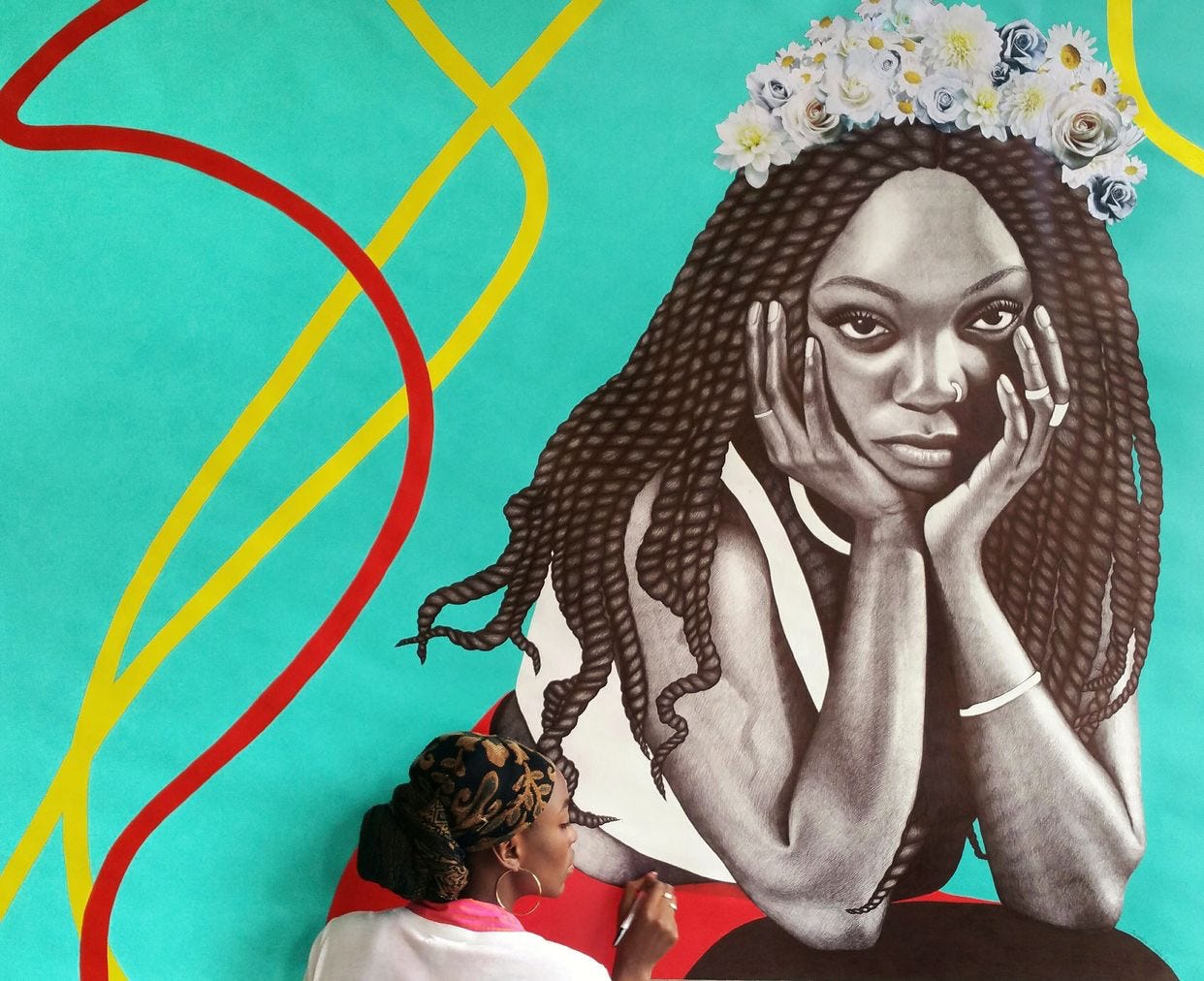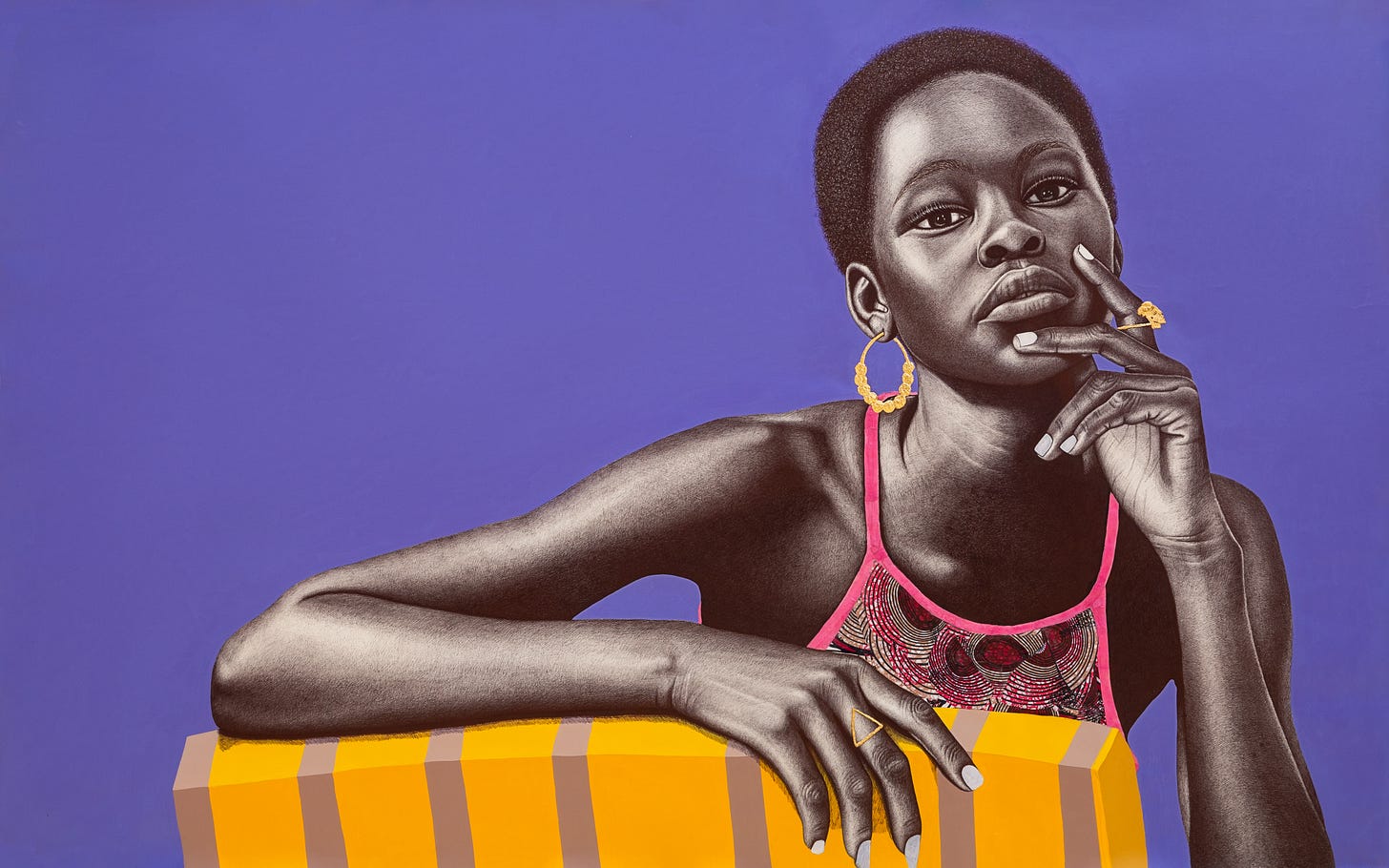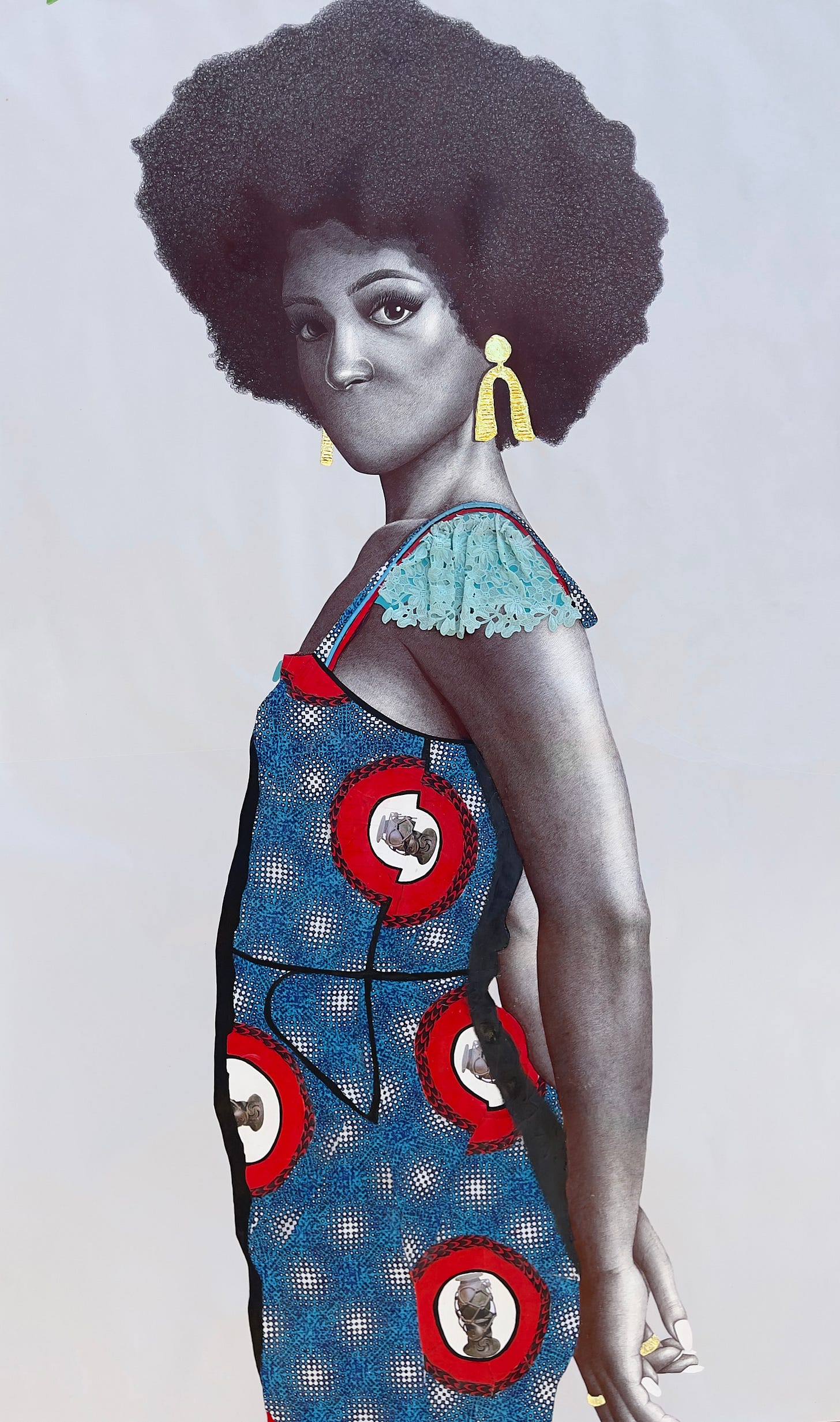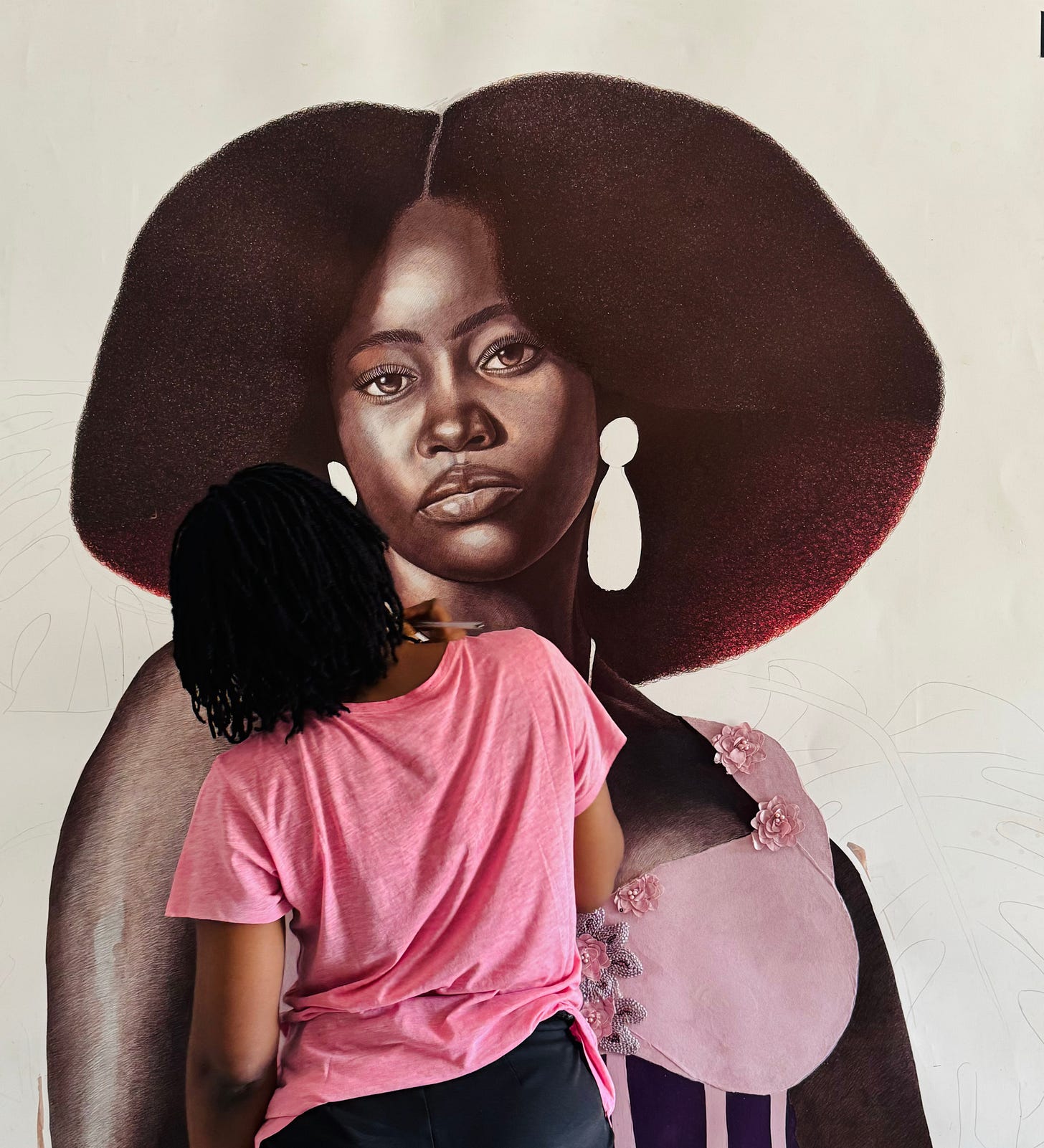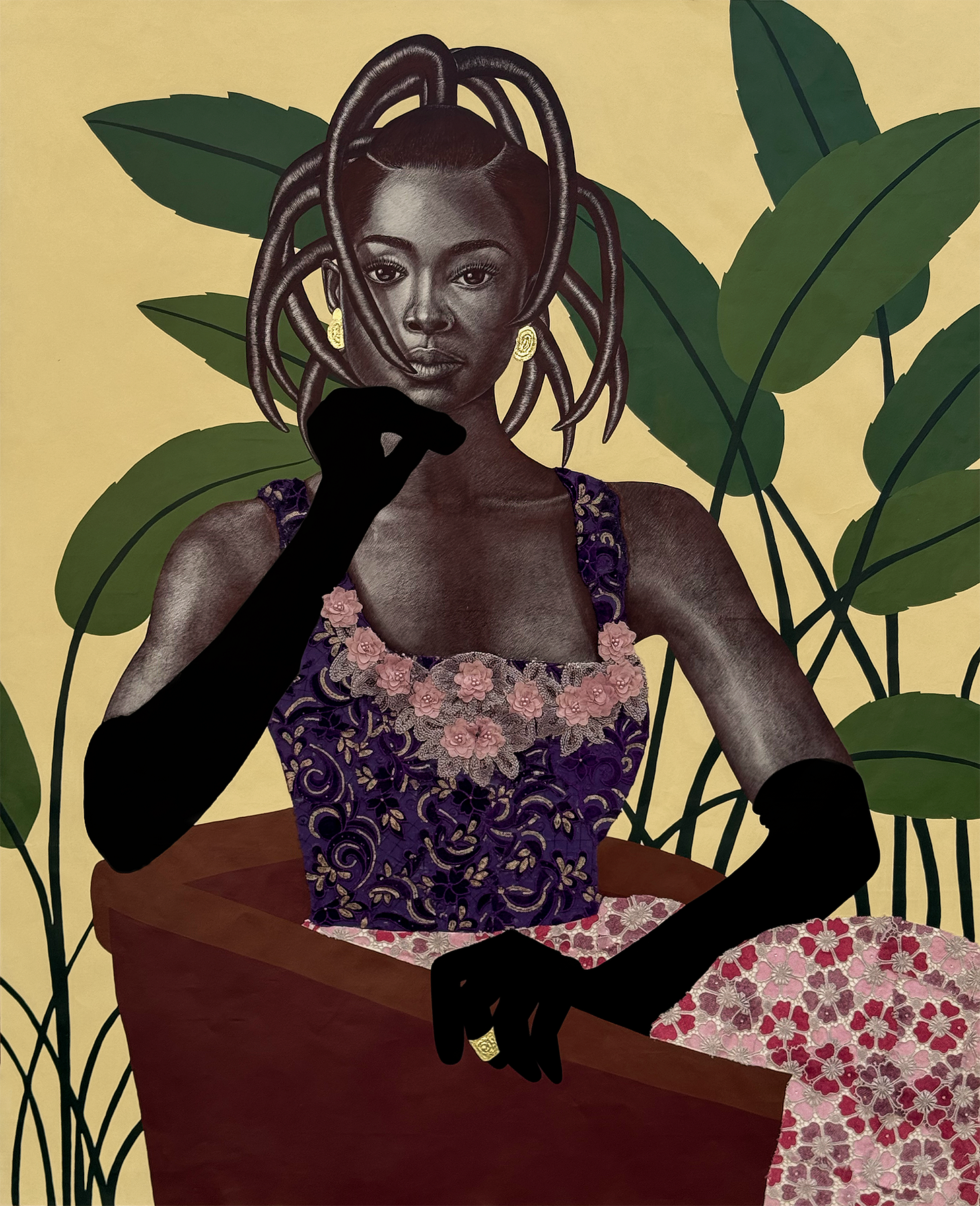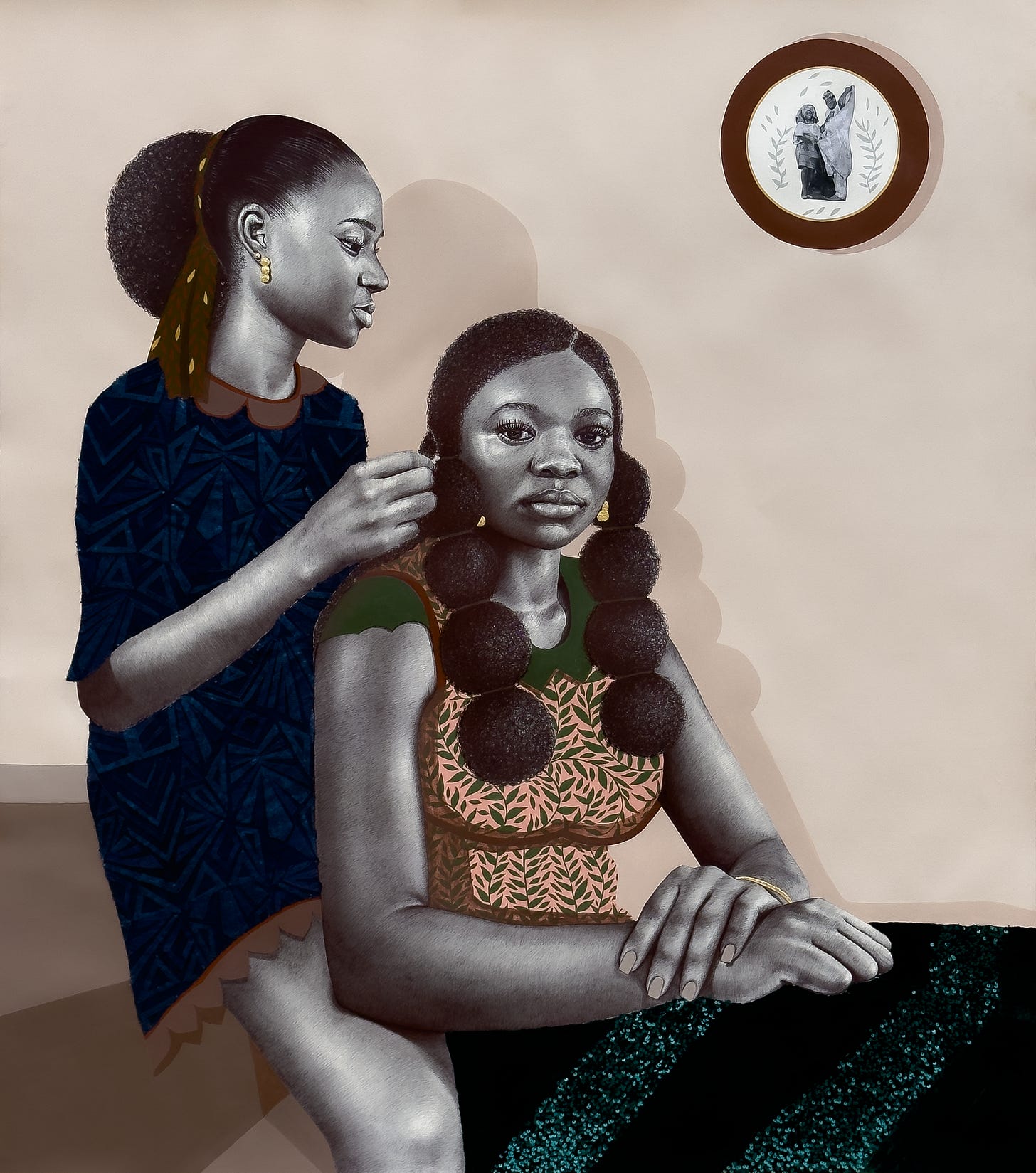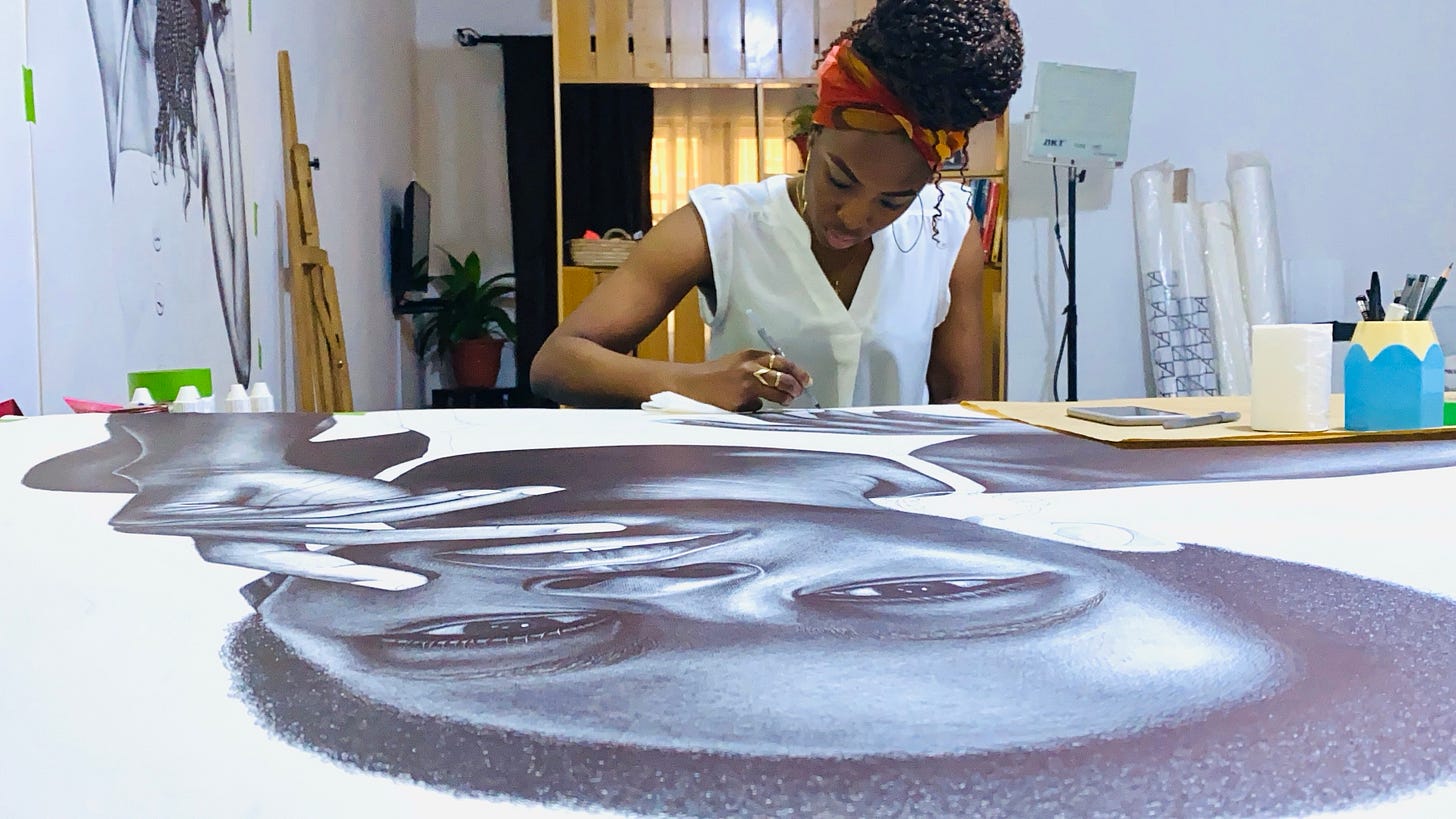Millions of Pen Strokes, One Incredible Story
Jacqueline Suowari’s Ballpoint Pen Drawings Will Blow Your Mind
Hello my GUTsy friends.
Last week we launched our mini-series on overlooked, under-appreciated art mediums. First up: the omnipresent ballpoint pen. We explored how artists approach the medium differently, and practiced the basics of line and value using the sticky, surprisingly controllable ink.
This week we take a deeper dive into the medium with a focus on one particular artist who is THE QUEEN of ballpoint: Jacqueline Suowari.
But first! ANNOUNCEMENT for GUT members: Winner of Tucker Nichols’s new book Mostly Everything is Mary Holscher. Email your mailing info to community@drawtogether.studio to receive your copy, you lucky duck. Want to participate in drawing/art contests/art supply giveaways in the future? Join us….
And now, onto the show.
All Hail the Ballpoint Queen: Jacqueline Suowari
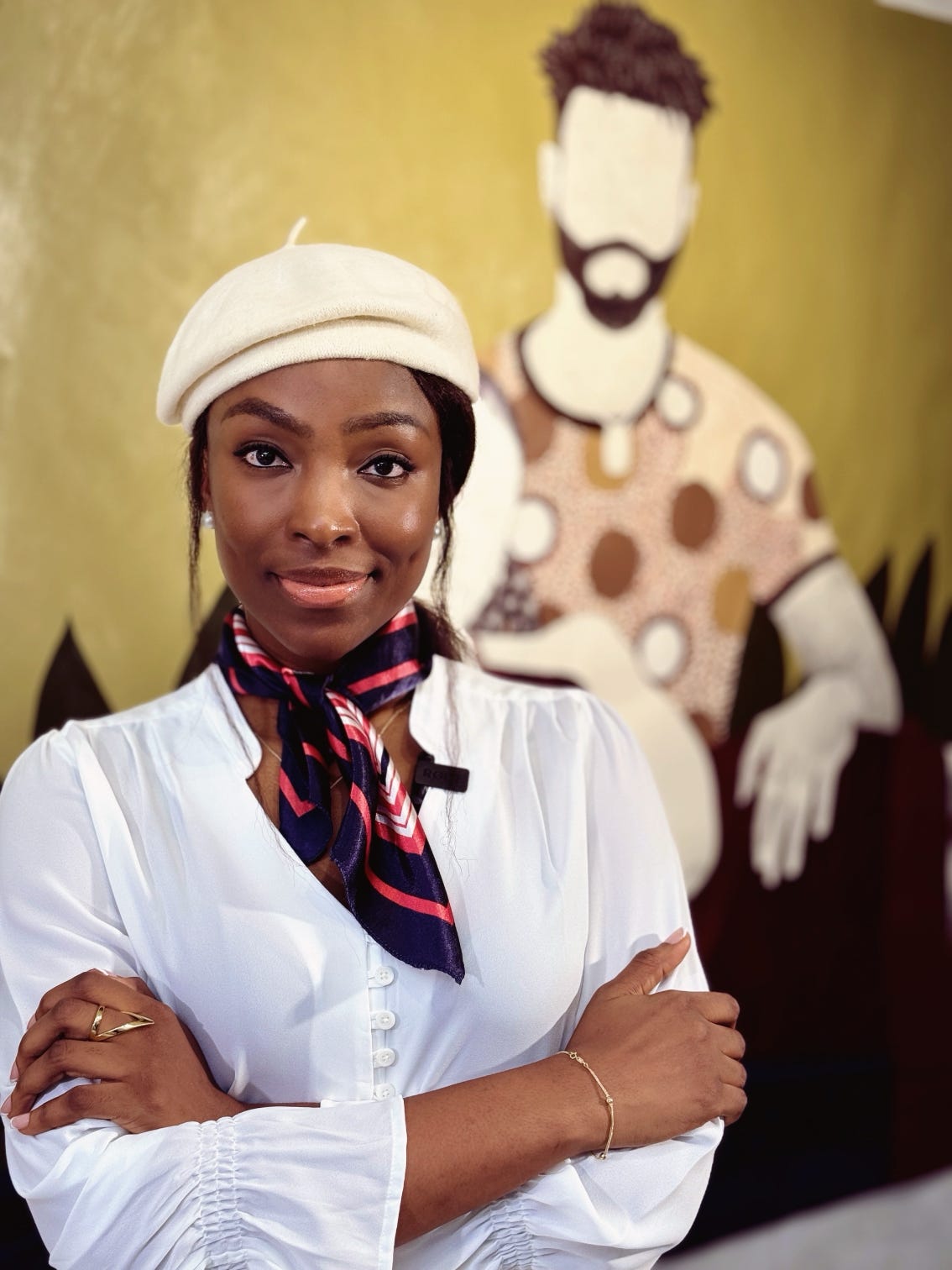
Jacqueline Suowari is a Nigerian multidisciplinary artist who makes incredible, large-scale portraits using ballpoint pens. She started drawing at age 5, and she knew she wanted to be an artist. However, when she entered her university’s fine art program, they taught her that drawing was supposed to be “a means to something,” like a step to do before sculpting or painting. There was only one drawing course! Since drawing wasn’t an option, she specialized in painting. After finishing school, she realized she wasn’t happy and it was her art — she realized she wasn’t doing what she really loved, and that was drawing!1
She has since specialized in working with ballpoint pens on monumental drawings though she continues to engage in film, sculpture, and other mediums. She has shown her work in major cities around the world, including a recent solo exhibition in Paris that went on to London. What we especially love here at the GUT is her dedication to mentoring young artists and creatives through The Passion for Art Initiative, a platform she founded in 2011. In March 2025, she was honored with the Most Influential People of African Descent (MIPAD) award for activism and humanitarian work. No big deal. ;)
Jacqueline generously chatted with us about her experience with ballpoint, her artwork in general, and her process. I love this interview and think you will, too.
The ballpoint pen symbolizes accessibility and discipline. It’s a tool used by everyone, yet capable of extraordinary sophistication. Its permanence means there’s little or no room for error; each stroke is an act of faith and intention. - Jacqueline Suowari
Q&A with Jacqueline Suowari
Wendy: How did you find your way to ballpoint pen as a medium?
Jacqueline: It started quite naturally. As a student, ballpoint pens were always within reach, so I began experimenting with them out of curiosity. Like most children, I doodled and sketched at the back of my notebooks. Over time, I became fascinated by how something so ordinary, an everyday writing tool could create such depth and emotion when layered and manipulated. I originally trained in art. What began as exploration turned into a lifelong dialogue between patience, texture, and line.
Wendy: What does ballpoint as a medium mean to you? What are its opportunities and challenges?
Jacqueline: For me, the ballpoint pen symbolizes accessibility and discipline. It’s a tool used by everyone, yet capable of extraordinary sophistication. Its permanence means there’s little or no room for error; each stroke is an act of faith and intention. The challenge lies in control and layering, building tonal depth without blotting the surface. But the reward is a richness and luminosity and contrast that feels alive.
Wendy: Do you have a favorite type of ballpoint you like to use, and why?
Jacqueline: Yes, I work primarily with BIC pens because of their consistent ink flow, tonal range and gloss effect. They allow me to layer gradually, almost like shading with graphite, while maintaining precision. I have also begun to explore Copic multiliner pens and Sakura Pigma Micron pens; they have a unique mark-making quality that allows for finer control and variation in line weight, enabling me to build texture and tone in ways that feel both delicate and deliberate.
There’s something poetic about using such a simple, globally recognizable tool to create monumental works of art.
For me, scale isn’t just aesthetic; it’s a statement about visibility, especially for the women and subjects I depict. Their stories deserve space.
Wendy: Have you always worked at such a large scale, and how does it impact your decisions?
Jacqueline: I’ve always been drawn to scale because it gives my figures a commanding presence and changes how people encounter the work. Large formats invite viewers to step closer; to be completely immersed in the rhythm and emotion of each line. For me, scale isn’t just aesthetic; it’s a statement about visibility, especially for the women and subjects I depict. Their stories deserve space.
When I started, people often told me that no collector would have room for such large works especially within the Nigerian Market. I chose not to let those limitations define my practice and instead followed my vision. I kept pushing the boundaries of size and detail. With time, I quickly realized that collectors had begun to make spaces with the scale of my work in mind. Today, some of my pieces span up to 10 feet wide, made from millions of pen strokes, and stand among the largest figurative ballpoint pen drawings in the world. Scale has become my language, it demands attention, honors my subjects, and creates an intimacy that smaller works simply can’t achieve.
Wendy: Your work is incredibly labor-intensive and detail oriented. How long does one drawing take, and do you have anything playing in the background while you work?
Jacqueline: A single drawing can take anywhere from three weeks to three months, depending on its size and complexity. I often listen to a variety of things; poetry, podcasts, YouTube videos on themes that fascinate me and different genres of music. My choices are usually determined by my state of mind when I walk into my studio. It’s important to have something that allows my mind to travel while my hand remains disciplined. Sometimes I work in silence; the repetitive motion becomes an almost meditative, soothing sound.
Wendy: You’ve mentioned wanting your art to be remembered for its message. What do you hope viewers will notice and take away from your work?
Jacqueline: I want viewers to see more than technique or skill in my work. I hope they feel presence, impact, and transformation. My practice is rooted in themes of identity, resilience, and the quiet strength of the human spirit, especially through the lens of womanhood. I want people to leave reflecting on empathy, on our shared humanity, and on the beauty hidden in the overlooked details of life.
At its core, my work is a celebration of Nigerian fashion and the profound language of hair; both vessels of identity and expression. In my culture, neither fashion nor hair is superficial; they are powerful statements of being. The fabrics we choose, the textures we embrace, the braids we weave each carry history, memory, and emotion.
Hair, in particular, is a vital sub-theme in my practice. It is more than adornment; it is a living archive of identity and resistance. Intricate braids reflect communal care, while sculptural styles assert individuality. For me, hair is where art, culture, and history meet. It tells stories of lineage and belonging, creativity and survival.
By merging fashion and hair in my portraits, I aim to reframe the aesthetics of African femininity; showing that beauty, in our context, is not passive. It is participatory, a way to narrate our place in the world. Each strand of hair, each fold of fabric becomes a metaphor for resilience and transformation.
Ultimately, I want people to see that fashion and hair are languages of power; tools through which women continually define themselves, challenge stereotypes, and honor the sacred artistry embedded in everyday life.
Patience is everything. Layer each hatch thoughtfully, and let the forms emerge. That’s where the magic happens.
Wendy: Before we wrap up, is there a ballpoint tip or technique you’d like to share with our Grown-Ups Table artists?
Jacqueline: Absolutely! Earlier, I mentioned how my layering technique is a metaphor for life; each stroke representing the experiences that shape us. Now, when it comes to technique, hatching is key.
Hatching is the process of drawing parallel lines close together to create depth and texture. You start with light, even strokes, and gradually build them up. By varying the pressure and direction, you can achieve darker areas and subtle transitions. Cross-hatching adds another layer by intersecting lines at different angles, giving even richer tonal variation.
Patience is everything. Layer each hatch thoughtfully, and let the forms emerge. That’s where the magic happens.
❤️✏️❤️
Thank you so much for joining us, Jacqueline! If you want to check out more, head to her Instagram. She has been sharing about her most recent body of work, “Hair With Me,” a miniature collection that explores hair as a vessel of identity, memory, and shared humanity.
Jacqueline has also developed a special assignment for you all, building on the techniques we used last week and drawing on her body of work.
Keep reading with a 7-day free trial
Subscribe to DrawTogether with WendyMac to keep reading this post and get 7 days of free access to the full post archives.



